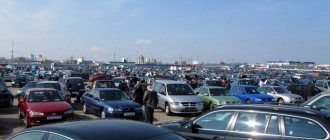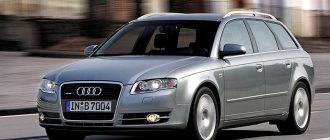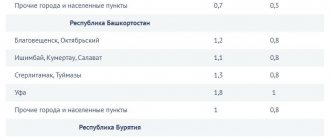Using the car customs clearance calculator, you will calculate the amount of customs payments required for customs clearance of a passenger car or other vehicle from abroad in 2021 in accordance with the customs legislation of the Customs Union (EAEU), which currently includes Russia, Kazakhstan, Belarus, Kyrgyzstan and Armenia. In addition to the listed countries, the import of cars from Georgia, Abkhazia, Ukraine, Germany and other European countries, the USA, Japan, Uzbekistan, the UAE, Finland, and South Korea is popular in the Russian Federation.
How to clear a car through customs in Russia in 2021
With a number of changes that occurred in 2021 in the issue of importing imported cars, car enthusiasts have more and more new questions. Let's look at the intricacies: what costs fall on the payer and how to calculate customs clearance of a car in a new way?
Design features
Have you decided to become the owner of an imported car? Be prepared for the fact that first of all you will have to prove your solvency by depositing the guarantee amount. If you don’t know how to calculate the cost of customs clearance of a car, you can deposit an approximate amount into your account. In any case, unused funds will be returned by customs after complete border control.
Confirmation that you have deposited funds will be a receipt and certificate issued by the Federal Customs Service. With these documents it is much easier to travel abroad. You should also pay attention to how you will import the car: drive it yourself, sitting behind the wheel, or use container transportation. This determines whether you need to fill out the TD-6 declaration.
From January 2021, a mandatory condition for importing a car across the EAEU border is the installation of the ERA-GLONASS system on it. It must be purchased from JSC GLONASS, installed in a certified center, enter information about the VIN number and body number and obtain a vehicle design safety certificate from a special laboratory.
Documents that will be required
When entering the territory of Russia, you must present a considerable package of documents:
- original documents for the car and their copies (it is important that the data in the passport and on the body, engine, etc. completely match);
- customs receipt with a certificate issued before departure abroad;
- car insurance contract;
- GLONASS security certificate;
- customs declaration, which can be prepared in advance using the online form for pre-filling the passenger customs declaration
Insurance is important. The lack of compulsory insurance can be a significant argument for refusal to cross the border, and in some cases even threatens with a fine.
How to clear a car through customs
Customs clearance is carried out in order to legalize a car for use in Russia. It includes an inspection of documents and the visual condition of the car.
If you want to move an imported car, first find out how much it will cost to register it. You can calculate the cost yourself using an online calculator, or contact a customs broker. Then you need to pay for customs services (customs services), which guarantees trouble-free crossing of the Russian border. Its amount is equal to the approximate cost of the car.
Funds are transferred to a customs deposit 3-4 days before departure abroad. After receiving the funds, the driver will be given a customs receipt. If there is an overpayment, the money will be returned upon the driver’s request within 4-6 weeks.
Alena Khotmirova, customs clearance expert:
— If the driver drives himself, he needs to fill out the passenger customs declaration TD-6. If it will be transported by container, TD-6 is not needed. You need to inform customs of the ship's name and container number.
Also read: Rules for selling a car 2021
What will you have to pay when importing a car into Russia?
customs duty
Customs duty is a mandatory payment when moving goods across the border, which is determined by the parameters of this product. According to current legislation, when calculating this indicator, the type of fuel used by the car, the year of manufacture of the vehicle, the volume and power of the engine are taken into account. If you have this data, you can easily find out how much customs clearance of a car will cost.
Payment of duty
The customs duty rate is fixed for each type of vehicle, approved by the Unified Customs Tariff and other regulations. However, the registration procedure is a responsible and troublesome matter. Therefore, most often, vehicle owners and people who conduct foreign economic activity resort to the services of customs representatives. And the concern about how to calculate customs clearance of a car rests with specialists.
Recycling collection
Customs officers collect a fee for the disposal of goods from wheeled vehicles. The payer independently makes the calculation, pays it to the current treasury account and provides a package of documents to the authorized body (to confirm the correctness of the calculation). It should be noted: if the car that is imported into Russia is more than 3 years old, then the payment will be higher than the same rate for a new car.
VAT
Unlike customs duty, its amount may vary depending on the type of fuel, age of the vehicle, etc. VAT is calculated based on the total amount of all payments: customs duty, duty and recycling fee.
Excise tax
Despite its ambiguity, for imported cars there is a fixed rate and depends directly on the customs value of the vehicle.
Is there a way to quickly calculate customs clearance of a car?
How to calculate customs clearance of a car and cope with, at first glance, complex calculations without extra effort? The customs calculator will help you. After entering all the necessary car data, you will receive the amount of expenses that you will have to incur when purchasing an imported vehicle.
This is one of the simple ways to calculate the cost of customs clearance of a car yourself, without spending a lot of time determining each item separately and without resorting to the help of specialists.
VIDEO: Rules for customs clearance of cars in Russia
Customs clearance procedure
The verification is carried out in several stages.
Stage 1: filling out the customs declaration. The document contains information about the owner and the vehicle. After filling out the declaration, you will be assigned a registration number, which will later be entered into the database.
Stage 2: transfer of the declaration and documents for the car to the inspector. When crossing the border you will be inspected:
- Original documents for the car and the sales contract (we recommend making copies in advance).
- Customs receipt and certificate. Issued at customs when the driver provides security for customs clearance (at least 5 days before entering Russia).
- Insurance. It cannot be done in advance, but it can be easily completed online at the representative office of the insurance company abroad or at the border. You do not need to be present in person or transport the car to obtain insurance.
- Sensor and button ERA-GLONASS.
- Vehicle Design Safety Certificate (VSSC). Some certification organizations issue it without the fact of installation, but with a signed installation agreement. The registration period is 1 day.
Inspectors will also be interested in the purpose of importing the car to check whether there are benefits in paying duties, and the mileage of the car.
Stage 3: decision making by the customs service. After checking the documents, the inspector will send the car for inspection. If the documents are not available, the employee will ask you to deliver them.
Stage 4: vehicle inspection. The check is carried out at a special site in the presence of the driver. The customs officer will check the accuracy of the data from the declaration. If violations of the rules for importing cars are discovered or the authenticity of the documents raises doubts, the inspector will draw up a protocol on the violations and send the car to a temporary storage warehouse. The car can stay there for no more than two months, during which time the driver needs to complete customs clearance.
If no violations are found, the employee will put an o in the declaration, sign it and affix a stamp. Then he will make an inventory of the documents in two copies and transfer them to the customs clearance (CTS) and currency control (VC) department. There they will check the cost of importing a car and the cost of transporting it to the Russian border, sign each copy of the inventory, put down dates and send the documents to the customs payments department (CPD).
Having calculated the total amount, the OTP employee will put a personal stamp, signature, his full name, the date of inspection, then transfer the package to the car registration department. Information about the car will be entered into the database, after which the driver will be issued an import certificate and vehicle title.
Also read: State duty for deregistration of a car in 2021
Customs clearance of cars in Russia
So, what duties and taxes do you need to pay when clearing a car through customs? We are talking about cars with gasoline, diesel and hybrid engines. There are separate rules for customs clearance of electric vehicles, which are described below.
- Customs clearance fee
. The fee amounts are shown below. - Customs duty.
- Recycling fee
. Both individuals and legal entities pay. The calculation is described below. - VAT
. Only legal entities pay. VAT (18%) is calculated from the amount: cost of the car + customs duty + excise tax. - Excise tax
. Only legal entities pay. Excise tax rates are given below.
Starting from 2014, the import of cars with only EURO-5 environmental class is allowed.
How much does customs clearance of a car from Abkhazia cost in Russia?
It is important to know how much does customs clearance of a car from Abkhazia to Russia cost? The price of customs clearance of a car from Abkhazia can help answer the question: is it advisable to buy and import a car. When clearing cars from Abkhazia through customs, individuals need to pay import customs duties. They consist of a customs clearance fee, a recycling fee and a flat duty rate depending on the age of the car, its value and engine size. Excise tax is not paid by individuals.
The size of the single rate is established by Decision of the EEC Council dated December 20, 2017 N 107. The table shows the rate values depending on the age of the car, its cost and engine displacement.
Table 1. Customs duties on cars from Abkhazia for individuals
| Categories of vehicles for personal use, bodies of vehicles for personal use | Customs duties, taxes payable |
| Passenger cars (except for cars specifically intended for medical purposes) and other motor vehicles intended primarily for the transportation of people, classified in heading 8703 of the EAEU CN FEA (except for vehicles specified in paragraphs 1 and 4 of Table 2 in 107 Solutions): | |
| For cars less than 3 years old: | |
| worth up to 8500 euros equivalent | 54% of the cost, but not less than 2.5 euros per 1 cubic meter. cm engine displacement |
| costing more than 8,500 euros, but more than 16,700 euros in equivalent | 48% of the cost, but not less than 3.5 euros per 1 cubic meter. cm engine displacement |
| costing more than 16,700 euros, but not more than 42,300 euros in equivalent | 48% of the cost, but not less than 5.5 euros per 1 cubic meter. cm engine displacement |
| costing more than 42,300 euros, but not more than 84,500 euros in equivalent | 48% of the cost, but not less than 7.5 euros per 1 cubic meter. cm engine displacement |
| costing more than 84,500 euros, but not more than 169,000 euros in equivalent | 48% of the cost, but not less than 15 euros per 1 cubic meter. cm engine displacement |
| worth more than 169,000 euros equivalent | 48% of the cost, but not less than 20 euros per 1 cubic meter. cm engine displacement |
| For cars more than 3 years old, but not more than 5 years old: | |
| whose engine displacement does not exceed 1000 cubic meters. cm | 1.5 euros per 1 cubic meter cm engine displacement |
| whose engine displacement exceeds 1000 cubic meters. cm, but does not exceed 1500 cubic meters. cm | 1.7 euros per 1 cubic meter cm engine displacement |
| whose engine displacement exceeds 1500 cubic meters. cm, but does not exceed 1800 cubic meters. | 2.5 euros per 1 cubic meter. cm engine displacement |
| cm engine displacement exceeding 1800 cc. cm, but does not exceed 2300 cc. cm | 2.7 euros per 1 cubic meter. cm engine displacement |
| whose engine displacement exceeds 2300 cubic meters. cm, but does not exceed 3000 cubic meters. cm | 3 euros per 1 cubic meter cm engine displacement |
| whose engine displacement exceeds 3000 cubic meters. cm | 3.6 euros per 1 cubic meter. cm engine displacement |
| For cars over 5 years old: | |
| whose engine displacement does not exceed 1000 cubic meters. cm | 3 euros per 1 cubic meter cm engine displacement |
| whose engine displacement exceeds 1000 cubic meters. cm, but does not exceed 1500 cubic meters. cm | 3.2 euros per 1 cubic meter. cm engine displacement |
| whose engine displacement exceeds 1500 cubic meters. cm, but does not exceed 1800 cubic meters. cm | 3.5 euros per 1 cubic meter. cm engine displacement |
| whose engine displacement exceeds 1800 cubic meters. cm, but does not exceed 2300 cc. cm | 4.8 euros per 1 cubic meter cm engine displacement |
| whose engine displacement exceeds 2300 cubic meters. cm, but does not exceed 3000 cubic meters. cm | 5 euros per 1 cubic meter cm engine displacement |
| whose engine displacement exceeds 3000 cubic meters. cm | 5.7 euros per 1 cubic meter. cm engine displacement |
From the table we can conclude that customs clearance of used (used) cars from Abkhazia, aged from 3 to 5 years, is most profitable!
The recycling fee when importing a car is paid once. It is intended for disposal of the vehicle after removal from service. For individuals, the size of the recycling fee depends on the age of the car.
Table 2. Recycling fee for cars from Abkhazia for individuals
| Recycling collection | |
| car less than 3 years old: | 3400 rubles |
| car over 3 years old: | 5200 rubles |
Customs duty is paid for processing the customs declaration; its amount for individuals depends on the value of the car.
Table 3. Customs duty on cars from Abkhazia for individuals
| Declared value of cargo upon import | Rates of customs clearance fees |
| Inclusive up to 200,000 rubles | 500 rub. |
| Over 200,000 rubles and inclusive up to 450,000 rubles | 1000 rub. |
| Over 450,000 rubles and inclusive up to 1,200,000 rubles | 2000 rub. |
| Over 1,200,000 rubles and inclusive up to 2,500,000 rubles | 5500 rub. |
| Over 2,500,000 rubles and inclusive up to 5,000,000 rubles | 7500 rub. |
| Over 5,000,000 rubles and inclusive up to 10,000,000 rubles | 20,000 rub. |
| Over 10,000,000 rubles | 30,000 rub. |
Customs clearance of electric vehicles in Russia
The taxes payable on customs clearance of electric vehicles are slightly different from the taxes payable on petrol and diesel cars.
From May 4, 2021 until the end of 2021, zero duties were introduced on the import of electric vehicles.
So, when clearing electric vehicles through customs, you must pay the following taxes:
- Customs clearance fee
. The fee amounts are shown below. - Customs duty
. - Recycling fee
. For all vehicles, including vehicles with electric motors, is calculated at uniform rates. The calculation of the recycling fee is described below. - VAT
. Legal entities (always) pay, as well as individuals (only when importing electric vehicles older than 3 years). VAT is 18% of the amount: catalog value of the car + customs duty + excise tax. - Excise tax
. Legal entities (always) pay, as well as individuals (only when importing electric vehicles older than 3 years). Excise tax rates are given below.
Features of importing an electric vehicle
The procedure for customs clearance of electric vehicles is almost no different from customs clearance of conventional cars. The difference is possible only in the amount of customs duties, which consists of the following indicators:
- customs clearance fee (tied to the customs value of the electric car): from 500 (at a price of 200 thousand rubles per car) to 100 thousand rubles (at a price of 30 million rubles per car);
- import duty 15%;
- VAT 20%;
- standard recycling fee;
- excise tax rates calculated from engine power.
Also read: How to communicate with a car buyer by phone
Customs clearance fee
The amount of the fee depends only on the cost of the car.
The new customs duty rates are effective from August 1, 2020.
| Cost of the car, rub. | Cost of registration, rub. |
| up to 200,000 | 775 |
| up to 450,000 | 1 550 |
| up to 1,200,000 | 3 100 |
| up to 2,700,000 | 8 530 |
| up to 4,200,000 | 12 000 |
| up to 5,500,000 | 15 500 |
| up to 7,000,000 | 20 000 |
| up to 8,000,000 | 23 000 |
| up to 9,000,000 | 25 000 |
| up to 10,000,000 | 27 000 |
| over 10,000,000 | 30 000 |
Recycling collection
The recycling fee is calculated using the following formula:
CS = BS * K
where BS is the base rate, K is the coefficient.
The base rate is determined by the category of the vehicle:
- passenger cars for non-commercial use – RUB 20,000.
- commercial vehicles (both cars and trucks and buses) – RUB 150,000.
Coefficient values for individuals:
| For cars under 3 years old | For cars older than 3 years |
| 0.17 | 0.26 |
Coefficient values for legal entities:
Recycling fee rates for legal entities were increased on April 1, 2021. The table shows the new coefficients.
| Engine capacity | up to 1000 cm3 | from 1000 to 2000 cm3 | from 2000 to 3000 cm3 | from 3000 to 3500 cm3 | over 3500 cm3 | electric cars |
| Cars under 3 years old | 1.65 | 4.2 | 6.3 | 5.73 | 9.08 | 1.63 |
| Cars older than 3 years | 6.15 | 15.69 | 24.01 | 28.5 | 35.01 | 6.1 |
Excise tax
The amount of excise tax on cars depends on the engine power.
The new rates are effective from January 1, 2021.
Current excise tax rates:
| Engine power | Excise tax rate |
| up to 90 hp | 0 rub. for 1 hp |
| 91 – 150 hp | 51 rub. for 1 hp |
| 151 – 200 hp | 491 rub. for 1 hp |
| 201 – 300 hp | 804 rub. for 1 hp |
| 301 – 400 hp | 1370 rub. for 1 hp |
| 401 – 500 hp | 1418 rub. for 1 hp |
| over 501 hp | 1464 rub. for 1 hp |










